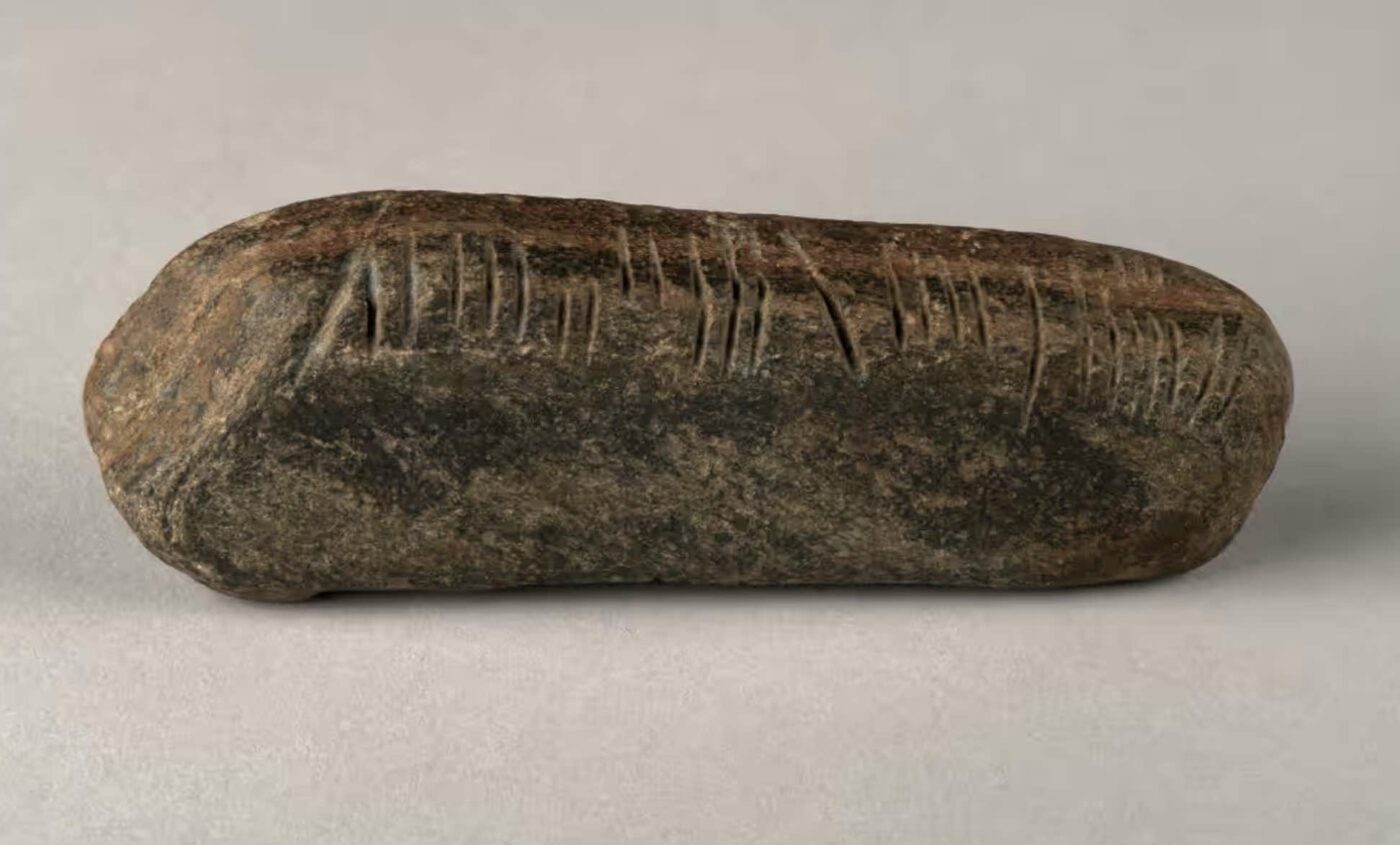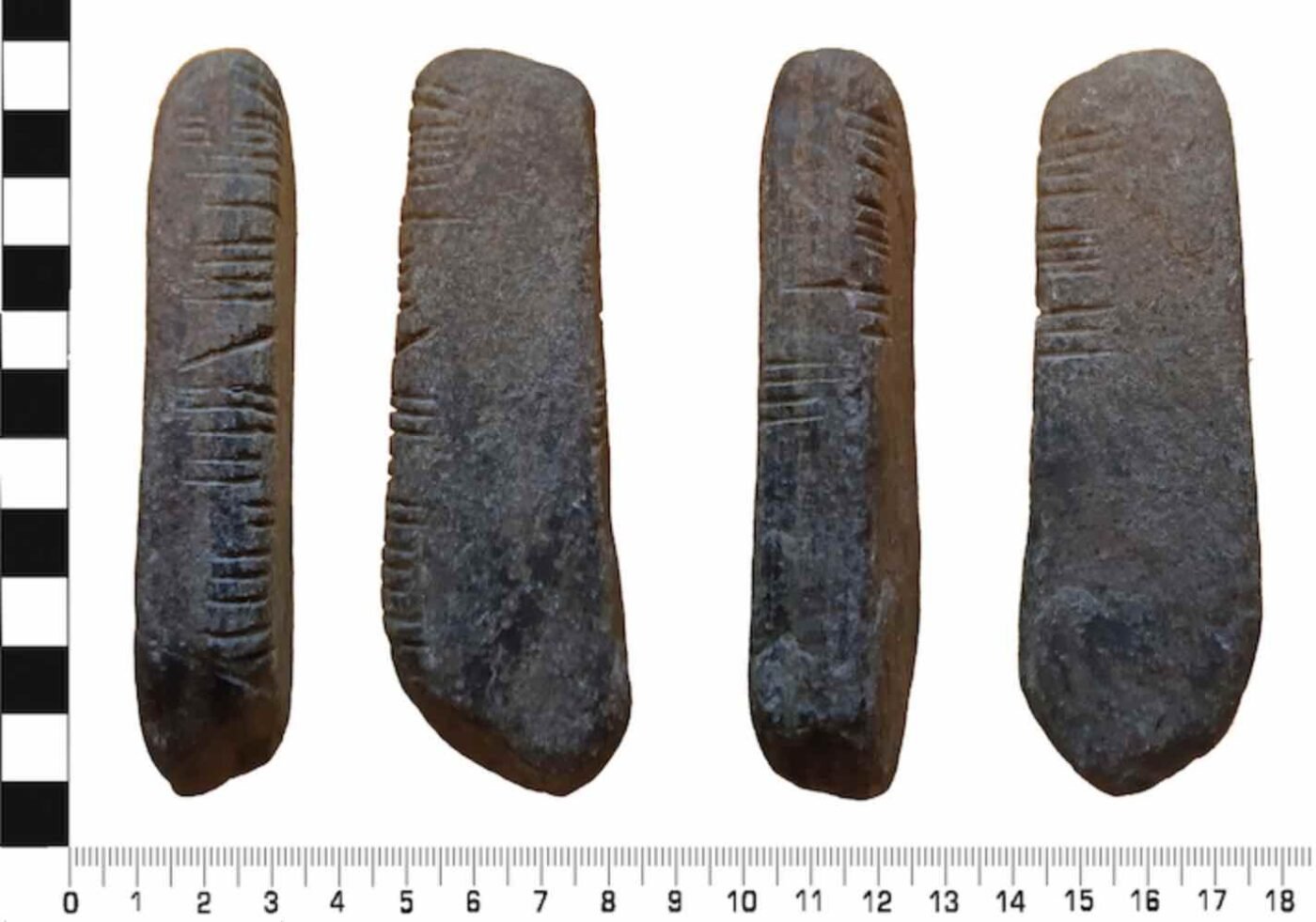
Posted on 05/10/2024 9:25:26 AM PDT by Red Badger

A curious-looking stone inscribed with a mysterious ancient language uncovered by a teacher near Coventry, England, has revealed a rare window to the region’s ancient history.
While working in his garden, geography teacher Graham Senior discovered a peculiar rock amidst the overgrown weeds in his flowerbed. Removing it from the surrounding earth revealed a rectangular wedge of sandstone bearing a series of unusual markings along its face.
Unable to decipher the strange set of inscriptions along the face of the artifact, Senior reached out to a local archaeologist for assistance with the unique find. Soon, experts were able to determine that the object he retrieved from his garden bore inscriptions in an Early Medieval alphabet that was once used in the British Isles to convey early variants of the Irish language.
THE OGHAM ENIGMA Today, historians and archaeologists are aware of just a few hundred ogham inscriptions throughout Ireland and parts of Britain, with the largest concentrations located in southwestern Ireland around Munster and in a few locations in Great Britain, including Pembrokeshire, Wales.
Existing examples of this ancient language show that it was used to convey individuals’ names in most cases. Sources in early Irish literature that detail two-word kennings offering explanations for the meanings of words in the Ogham alphabet indicate that most of the markings are named for various trees found in the British Isles.
Senior’s unique discovery is believed to date to the fifth or sixth century and provides archaeologists with another example of this enigmatic ancient script used prior to the adoption of the vellum manuscripts, which offers modern researchers a glimpse at the Irish language as it was conveyed before the institution of Latin insular script.
AN ACCIDENTAL DISCOVERY
At just 11 centimeters in length and weighing less than 140 grams, Senior was perplexed by the markings on the stone, although it seemed clear that they weren’t formed by any natural process and were “not scratchings of an animal.”

The stone artifact unearthed by Senior near Coventry, bearing examples of the ancient language known as Ogham (Credit: Birmingham Museums Trust).
The surprise discovery prompted him to reach out to a relative who specialized in archaeology, which eventually brought Senior to the Portable Antiquities Scheme, an organization run jointly by the British Museum and Amgueddfa Cymru – Museum Wales which, according to its website, was established to “encourage the recording of archaeological objects found by members of the public in England and Wales.”
Each year, thousands of objects of significance to the heritage of England and Wales are discovered, particularly by individuals who, like Senior, are “gardening or going about their daily work.”
Teresa Gilmore, an archaeologist and finds liaison officer with Birmingham Museums, called Senior’s discovery an “amazing find,” telling The Guardian that the discovery could potentially offer archaeologists new insights into early medieval activity in the area that experts are still working to decipher.
Celtic Studies professor Katherine Forsyth, who was shown the artifact by Gilmore, believes it dates from sometime between the fifth and sixth centuries.
DECIPHERING THE STONE’S MESSAGE
Although the Ogham script is somewhat obscure and unrecognizable by most today, the message on the object Senior discovered is decipherable. According to Forsyth, the inscription reads “Maldumcail/S/Lass,” the first part of which may refer to a person by the name of Mael Dumcail, and the final portion possibly referring to a location.
So who was Mael Dumcail, and why was this individual’s name inscribed on this stone? Although details about this individual and their relevance to the stone will likely remain a mystery, equally curious is the location where it was discovered since ogham stones of this variety are rarely discovered outside of Ireland and Scotland.
According to Gilmore, it is possible that the discovery may have had a relationship to the early medieval monasteries, and one interpretation of its significance includes that the object may have been a keepsake that had belonged to someone traveling from Ireland, perhaps during a visit to one of these religious centers.
Presently, the artifact is residing at the Herbert Art Gallery and Museum in Coventry, to which Senior has permanently donated his find. Beginning on May 11, the ogham stone will appear as part of an exhibition hosted at the museum.
Ali Wells, curator of the forthcoming exhibition, expressed excitement over the rare find, calling it an “exciting mystery” that a stone featuring language with origins in Ireland would be found hidden beneath several inches of soil in Coventry.
Wells notes that urban development and other operations in and around Coventry have led to much of the earth being worked over time, particularly near the city center, which reduces the number of archaeological discoveries that are made with time.
The fact that such a find was made, and one so seemingly out of place, “was quite unexpected,” Wells told The Guardian.
emphasized that discovering this unique ogham stone in Coventry offers a rare glimpse into the region’s historical mysteries, especially given the city’s extensive archaeological excavation over the years.
The forthcoming exhibition, “Collecting Coventry,” will be held at the Herbert Art Gallery and Museum and is open to the public.
-PJ
Neolithic FR post, IMHO. It’s clear Mael didn’t read the article, too.
Barry Fell could’ve read it.
Knife sharpener?
You probably can’t use a spade anywhere in Britain without digging up something. (Note: Spade is the British word for shovel.)
“You’ll shoot your eye out kid”
It could be a name - maybe the original barcode!
“If you can’t sign your name - just make your mark.”
“Oops - sorry, that mark has been taken...”
Looks like the forehead of Abdullah The Butcher LOL
Tool to shape bone needles.
Could be a weight for a loom or fishing net.
Early long division math.
Thanks Red Badger. Ogham was used in Britain before the Roman conquest. Barry Fell pointed out that one of the figures on the Gundestrup Cauldron (found in NW mainland Europe, and dating from the last couple of centuries BC) is using his fingers to spell "thunder" in Ogham.
Disclaimer: Opinions posted on Free Republic are those of the individual posters and do not necessarily represent the opinion of Free Republic or its management. All materials posted herein are protected by copyright law and the exemption for fair use of copyrighted works.